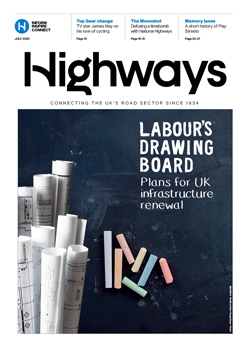Autonomous Vehicles driving on our roads will need to operate more cautiously than the average driver in order to foster public trust in the technology according to one of the UK's driverless car projects.
The second in a series of three trials carried out as part of the VENTURER project focused on demonstrating safe interactions between driverless cars and one or more conventional vehicles in typical traffic scenarios. It gathered the trust ratings of participants being driven in an AV to understand user responses both in a simulated and real-world environment.
The experiments for the trial took place on roads at the University of the West of England (UWE Bristol) during the summer, using both the Wildcat road vehicle and the VENTURER Simulator, housed in the Bristol Robotics Laboratory (BRL). The trial was designed to replicate some of the most complex driving situations in urban areas including interactions at junctions and on road links.
Professor John Parkin, UWE Bristol's lead on the traffic engineering and human factors side of this trial, said, 'It is important to understand how people respond to being driven autonomously by a robot within a context where they would normally expect road rules to be obeyed, and for there to be a range of human behaviours and interactions.'
Professor Tony Pipe, UWE Bristol's Principal Investigator on the project added, 'Building trust in this technology is a crucial factor in its commercial success. VENTURER is firmly focused on the issues of user acceptability, and the effects this technology could have in the related legal and insurance sectors. The full analysis of the results will be an important factor in understanding the public reaction to this potentially revolutionary technology.
"Public opinion about driverless cars is mixed right now. Opinions range from being very excited about the potential for releasing useful time, increased road safety and wider social issues such as reduced needs for parking and pollution, to being very sceptical about many aspects.'
The experiment was organised in two phases. Phase one involved 45 participants experiencing ten different typical highway scenarios in both the Wildcat and the VENTURER Simulator. After each scenario, the participants were asked to rate their trust in the AV's operation. The participants in the trial ranged from AV sceptics to enthusiasts.
During phase one, the AV's software (which controls both the simulator and driverless vehicle) ensured the vehicle always gave way to any vehicle encountered during manoeuvres. Phase one experiments were undertaken using both the Wildcat and the VENTURER Simulator to enable researchers to assess whether trust scores varied between the two platforms. It was found that participants were generally more trusting of manoeuvres when seated in the simulator, rather than the Wildcat.
However experts say that during phase two, which took place only in the simulator, participants experienced the software deciding to pull out in front of other vehicles, as well as giving way. The 41 participants involved in the second phase each sat in the simulator while it performed these manoeuvres, giving their feedback to the researcher sitting next to them.
Overall, participants showed greater trust in situations when the autonomous vehicle was driving in the more cautious setting, such as always giving way.
John Parkin concluded, 'The trial suggests that people will want autonomous vehicles on our roads to be less assertive than the average human driver. This is very encouraging, because AVs will then have the potential to have a dramatic and beneficial traffic calming effect.'
As expected, those who said they trusted automation and technology in general were also more trusting of the AV, thus validating the trial's findings. However, the trial identified no significant correlation between trust score and either participant age or driving experience. This indicated that, perhaps contrary to expectations, certain user groups, for example older drivers, do not demonstrate statistically lower or higher feelings of trust towards AV decisions.
During the trial, while BAE systems were running the Wildcat vehicle, the University of Bristol and BRL also assessed the driverless car's decision-making systems and sensor performance.
UWE Bristol's human interaction findings will feed into how the driverless car's technology continues to be developed so that it can drive safely on our roads.
The next trial, set to take place in January and February 2018, will consider trust levels in AVs in the context of interactions with cyclists and pedestrians.





